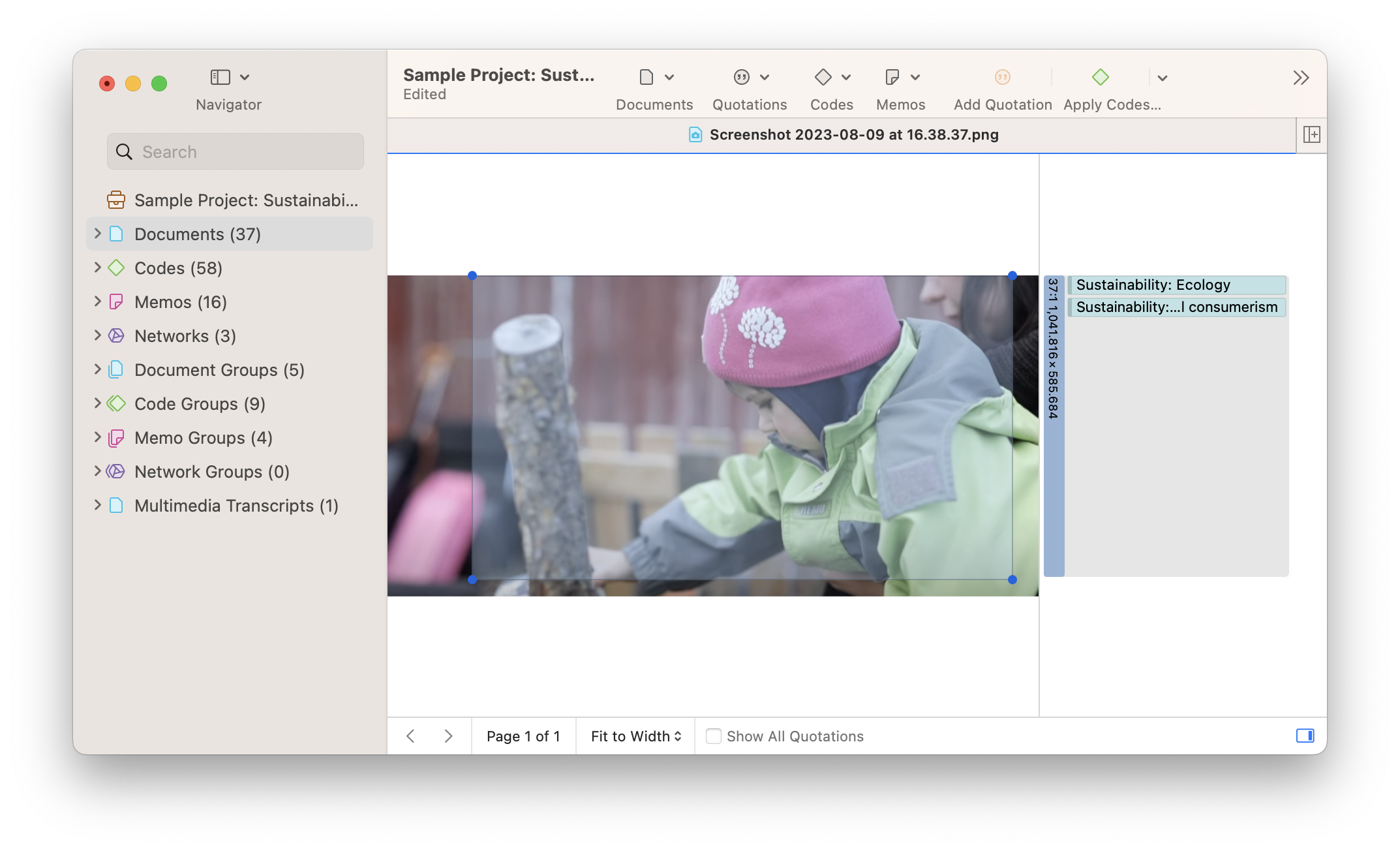Any research method that produces unstructured data can be considered a qualitative research method. However, three types of qualitative methods are commonly used today to conduct data collection.
Observations
The simplest way to study a phenomenon is to look at it. Research conducted through direct observation involves collecting data in field notes, recordings of audio and video, and images for data analysis. This means that researchers can turn most forms of information into data that can be analyzed with qualitative methods. The illustrative examples qualitative research methods generate can help research audiences understand observed phenomena more clearly. ATLAS.ti can help with this process by allowing qualitative researchers to code major forms of data, including images and audio.
Interviews
Interviews are a fundamental method in qualitative research, allowing researchers to gather in-depth information about individuals' thoughts, feelings, experiences, and interpretations. Interviews can take various forms, from highly structured with predetermined questions, to semi-structured with some guidance, to unstructured or 'open-ended' where the conversation evolves based on the interviewee's responses. Conducting interviews offers a direct interaction with participants, enabling the researcher to probe deeper into the topics under discussion, clarify responses, and ask for elaborations. Interviews can yield rich, detailed data that provide a deep understanding of a person's perspective. However, they also require a significant investment of time and resources. Skilled interviewing and good rapport building are essential for collecting meaningful and accurate data.Focus groups
A focus group consists of a group of participants collectively discussing a topic, speaking among themselves even more than they might speak to the researcher or focus group moderator. The aim is to inquire about people's perceptions, opinions, beliefs, and attitudes towards the topic of study, which could be a feature of social life, such as body art or a specific product, such as market research for a new campaign. Since the researcher can observe and speak with a group of people, focus groups are ideal for understanding the social construction of a phenomenon or how meaning is collectively co-constructed.
Focus groups are especially popular in market research. Still, qualitative researchers who want to observe how people interact with each other could consider conducting a focus group. For example, how people discuss their opinions and perspectives in groups is an essential inquiry in sociology and linguistics that focus groups can help explore.
